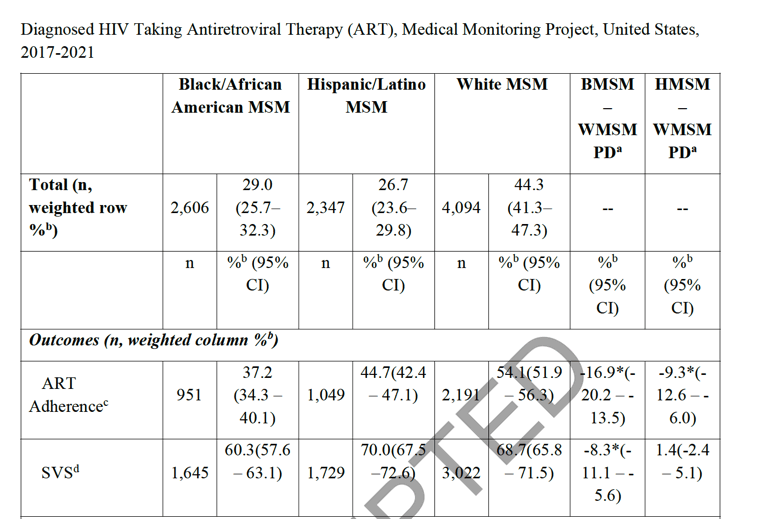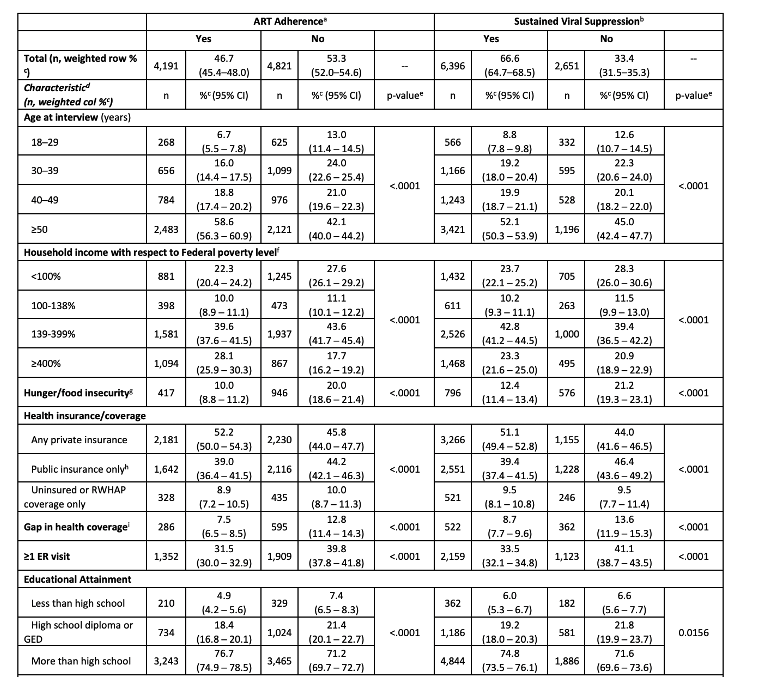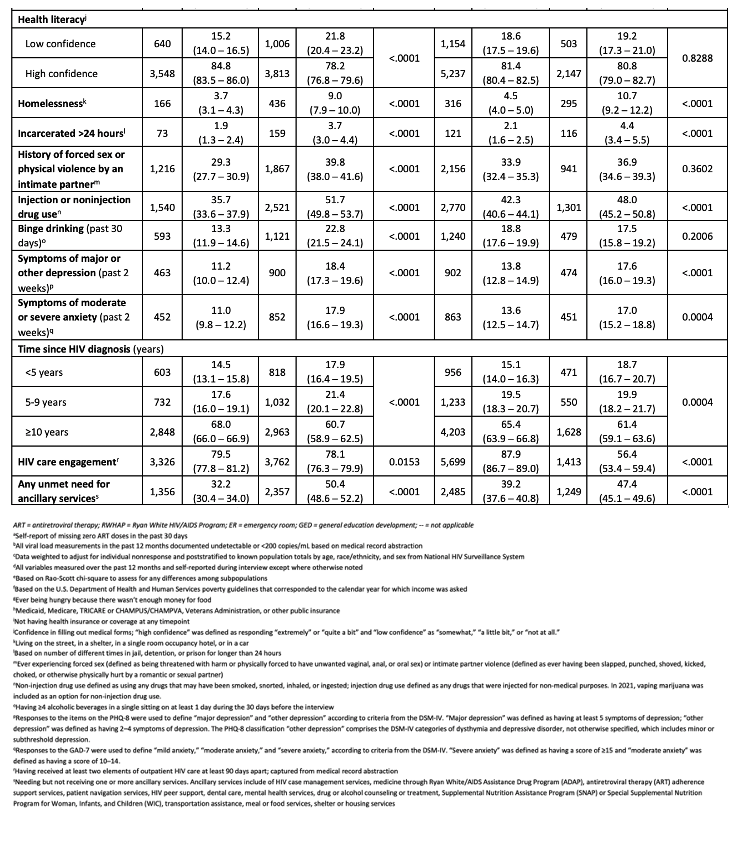| |
Explaining racial and ethnic disparities in antiretroviral therapy adherence and viral suppression among U.S. men who have sex with men
|
| |
| |
Download the PDF here
Feb 8 2024, AIDS>
Objective: To identify factors-including social determinants of health (SDOH)-that explain racial/ethnic disparities in antiretroviral therapy (ART) adherence and sustained viral suppression (SVS) among U.S. men who have sex with men (MSM) with HIV.>
Although the magnitude of disparities in treatment outcomes between Black MSM and White MSM was reduced, disparities remained after adjusting for SDOH, demographic, and behavioral and clinical characteristics. This indicates that there are other factors or characteristics that we were unable to account for in our analysis, such as differences in ART regimen, stigma, discrimination, and racism.>
All covariates (including anxiety, depression, education, health literacy, poverty-see table below) were associated with ART adherence (all p<0.001); all characteristics (p<0.05) except health literacy, history of forced sex or physical violence by an intimate partner, and binge drinking were associated with SVS.>
Approximately 46.7% of MSM reported ART adherence, and 66.6% had SVS.>
Over one-third (37.2% [95% CI: 34.3 - 40.1]) of Black MSM, 44.7% (95% CI: 42.4 - 47.1) of Hispanic/Latino MSM, and 54.1% (95% CI: 51.9 - 56.3) of White MSM reported ART adherence.
Overall, 60.3% (95% CI: 57.6 - 63.1) of Black MSM, 70.0% (95% CI: 67.5-72.6) of Hispanic/Latino MSM, and 68.7% (95% CI: 65.8-71.5) of White MSM had SVS (Table 1.
our findings indicate that multilevel approaches to improving SDOH are also needed to ensure that persons with HIV (PWH) have support to successfully continue HIV treatment.
Conclusion: Adjusting for SDOH and other characteristics greatly reduced racial/ethnic disparities in ART adherence and SVS among MSM with diagnosed HIV. Addressing these factors could substantially improve health equity among MSM. However, to eliminate disparities, more efforts are needed to understand and address other factors that contribute to the remaining disparities in treatment outcomes. >
At the community level, coordination of HIV and ancillary services programs have a role in addressing SDOH among PWH.>
ART adherence is the first step toward achieving SVS [11]. Although evidence-based interventions addressing individual-level adherence challenges are important [12-13], our findings indicate that multilevel approaches to improving SDOH are also needed.>
implementing public health and medical policies that end structural racism (i.e., the laws, policies, institutional practices, and entrenched norms that perpetuate widespread unfair treatment of racial/ethnic minorities [29]) is essential, given that structural racism underlies many of the SDOH that drive racial/ethnic disparities in HIV [30]. >
Table 1.

Supplementary Digital Content 1. Associations of Selected Demographic Characteristics, Social Determinants of Health, and Behavioral and Clinical Characteristics with Clinical Outcomes among Black/African American, Hispanic/Latino, and White Men Who Have Sex with Men (MSM)-MSM with Diagnosed HIV Taking Antiretroviral Therapy (ART), Medical Monitoring Project, United States, 2017-2021


|
|
| |
| |
|
|
|